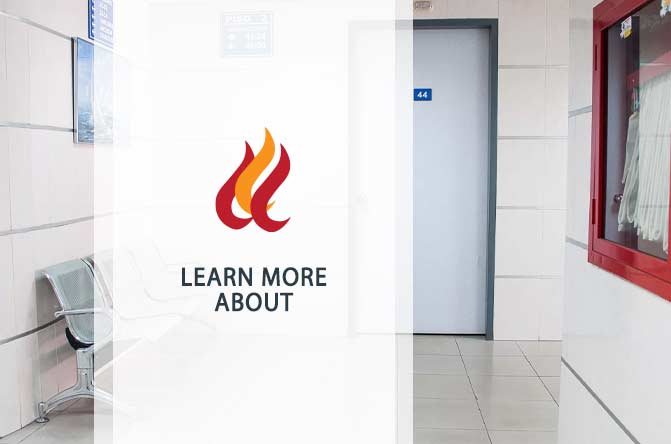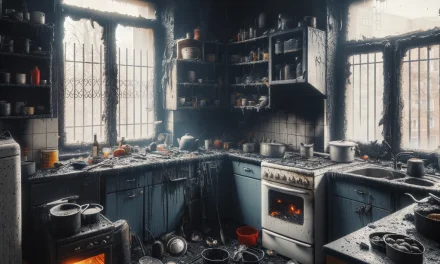Fire Safety in Hospitals: Special Considerations
Patients come to hospitals in search of consolation and to speed up their road to recovery since hospitals are sanctuaries of healing and caring. However, even in these places of sanctuary, the danger of flames remains, which is why the prevention of fires in hospitals is of the utmost importance. In this piece, we will look into the important components of fire safety within hospital grounds, taking into consideration the specific problems that need to be overcome and the measures that need to be taken.
An Understanding of the Importance of Fire Safety in Hospitals
When it comes to protecting patients and staff from harm in the event of a fire, hospitals require additional focus. They provide shelter for patients who are particularly susceptible to harm, such as those who have restricted movement or health issues that make a rapid evacuation difficult. In this section, we will discuss the key factors that should be taken into account in order to guarantee the safety of both the personnel and the patients.
Floor Plans and Evacuation Routes
Every medical facility needs to be equipped with a detailed floor plan that features well-delineated exits in case of an emergency. These pathways have to be uncomplicated to reach and adequately illuminated so that individuals are able to travel them even in the event that there is a disruption in the supply of electrical power. In the event that there is a fire, these pathways transform into lifelines and lead everyone to safety.
It is imperative that everyone in the hospital, including patients, medical staff, and even visiting members of patients’ families, become familiar with the available escape routes. Consider it to be analogous to practicing the route you would take to escape from your home in the event of a fire. Everyone should participate in regular exercises and training sessions so that they are prepared to react quickly and safely in the event of a fire emergency. These should be done regularly.
Smoke Alarms and Fire Extinguishers
If a hospital wants to have an efficient fire safety system, it should be equipped with up-to-date smoke alarms, fire alarms, and fire extinguishers and place them in locations where they are most likely to be needed. When there is smoke in the structure or there is a suspicion that a fire is occurring, smoke alarms are vitally crucial for informing the people who are inside the building. They should be equipped with loud alarms and flashing lights as standard, both of which are designed to startle even the most resistant sleepers awake.
Fire extinguishers should be kept in areas throughout the hospital that are both conveniently accessible and promptly available in the event of an emergency. The employees of the hospital should receive training on how to use these extinguishers, and the extinguishers themselves should be examined on a routine basis to verify that they are operating appropriately.
Special Considerations for Vulnerable Patients
Patients admitted to hospitals frequently suffer from cognitive impairments or limited mobility, hence hospitals typically keep these kinds of patients. When it comes to these particular people, additional safety measures are obligatory in order to guarantee their wellbeing in the case of a fire.
In the event of a medical emergency, security bars, which are frequently installed in hospital rooms to protect patients from falling, have to be able to be unlocked quickly and simply from the inside. It is imperative that these bars be constructed with a quick-release mechanism that can be manipulated without excessive strength or dexterity being required on the part of the user.
Creating an Effective Evacuation Plan
Fire safety in hospitals also involves having a well-thought-out evacuation plan in place. This plan should be developed in consultation with the local fire department and adhere to national fire protection standards.
Identifying Safe Distance Zones
Important as it is to designate safe distance zones. These spaces need to be located away from the burning building to ensure the safety of both the employees and the patients. It is critical for folks to have accurate information on the locations of the safe zones to which they should assemble after they have completed the evacuation.
Incorporating Family Members
The presence of a patient’s family members is something that the medical personnel at the hospital should take into consideration, particularly when patients have overnight visitors. They should be involved in evacuation exercises and informed of escape routes and safe distance zones. It is imperative that hospitals keep an open line of contact with members of patients’ families in order to guarantee that all parties are on the same page about fire safety procedures.
The Role of the Fire Department
In the event of a fire, the fire department becomes the primary response team. Hospitals should establish a strong partnership with the local fire department, conducting joint drills to ensure a seamless response in case of emergencies.
Regular Maintenance and Inspections
In order to guarantee that all fire safety equipment and systems in hospitals are in operational condition, these facilities have to be subjected to routine inspections. Inspection and testing of fire safety equipment, such as smoke alarms, fire extinguishers, sprinklers, and emergency lighting, should be performed at regular intervals. In order to keep the readiness level at a high level, any inadequacies must be remedied as soon as possible.
Continuous Training
The importance of continuous training cannot be overstated. Hospital staff should undergo frequent training sessions to refresh their knowledge of fire safety procedures and evacuation protocols. These training sessions should be designed to be easily understood, even by an eighth-grader, ensuring that everyone can follow the instructions effectively.
Conclusion
Fire safety in hospitals is not just a matter of compliance; it’s a moral obligation to protect the lives of patients and staff. By meticulously planning for fire safety, hospitals can create an environment where everyone feels secure. Remember, in a healthcare facility, the best response is a proactive one.
In times of crisis, it’s also essential to have reliable partners. Del Mar Builders, a top fire restoration company, can help hospitals recover and rebuild after fire incidents. Contact them at 800.298.0900 to learn more about their services.
In conclusion, fire safety in hospitals is a multifaceted endeavor that involves comprehensive planning, regular maintenance, and continuous training. By following the guidelines and recommendations outlined in this article, hospitals can significantly reduce the risk of fire-related incidents and ensure the safety and well-being of everyone within their walls.




